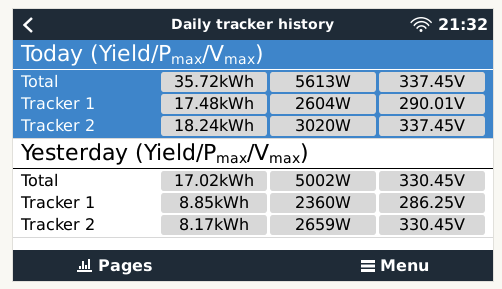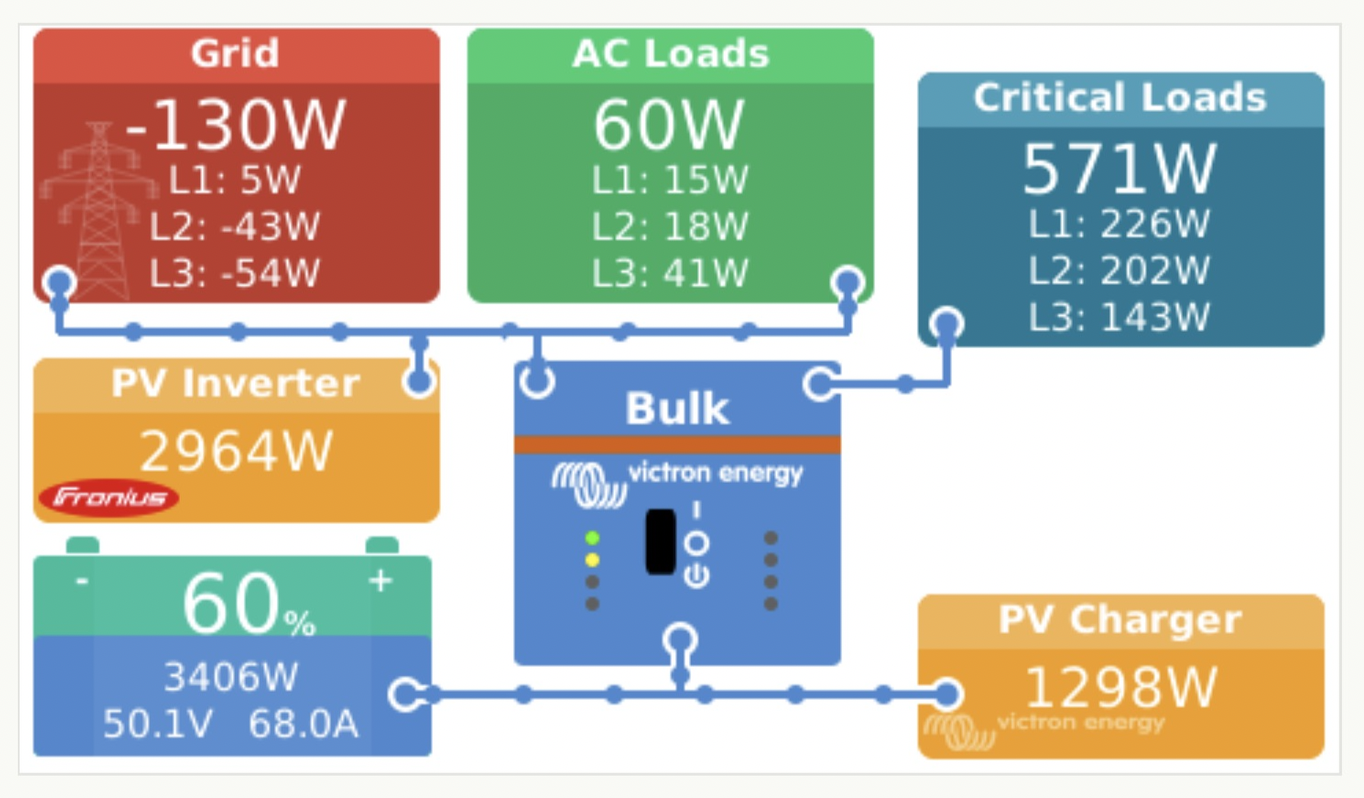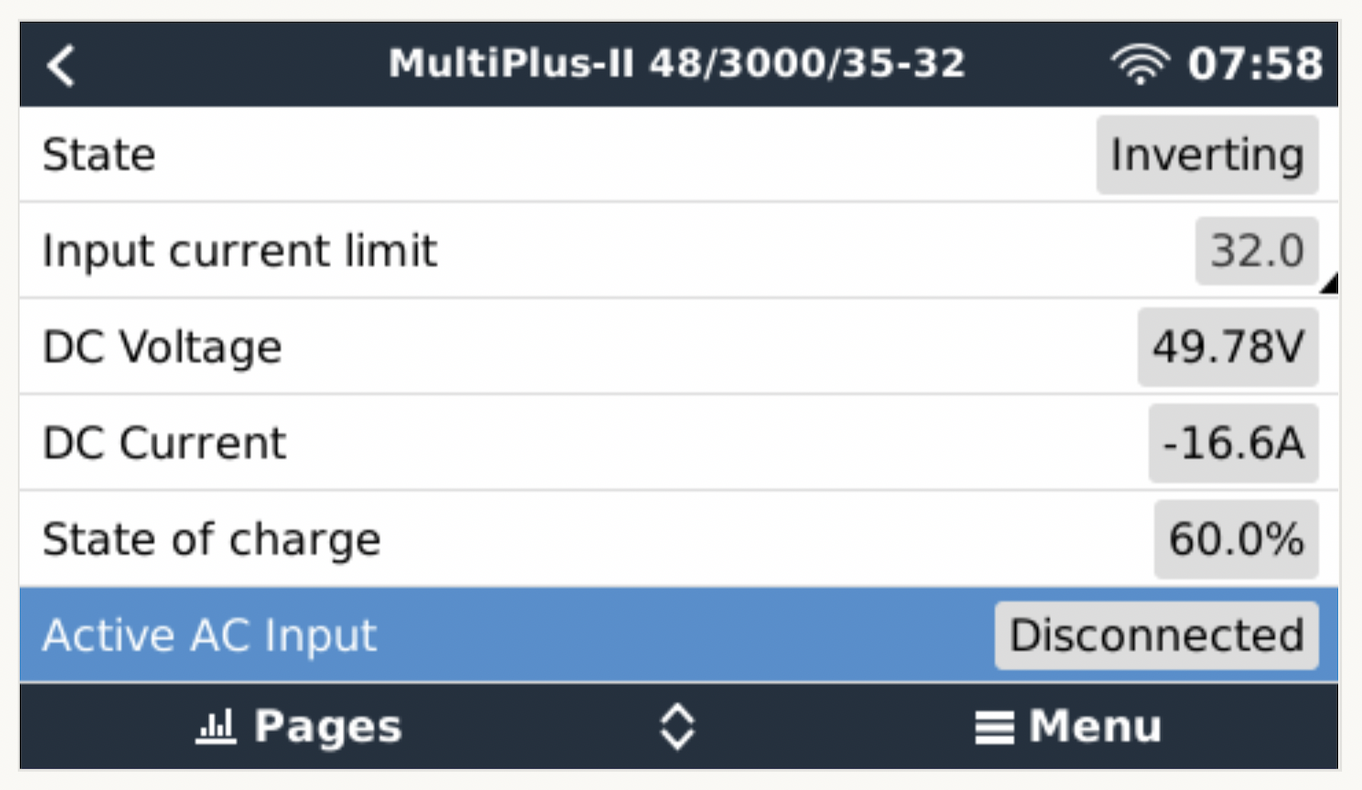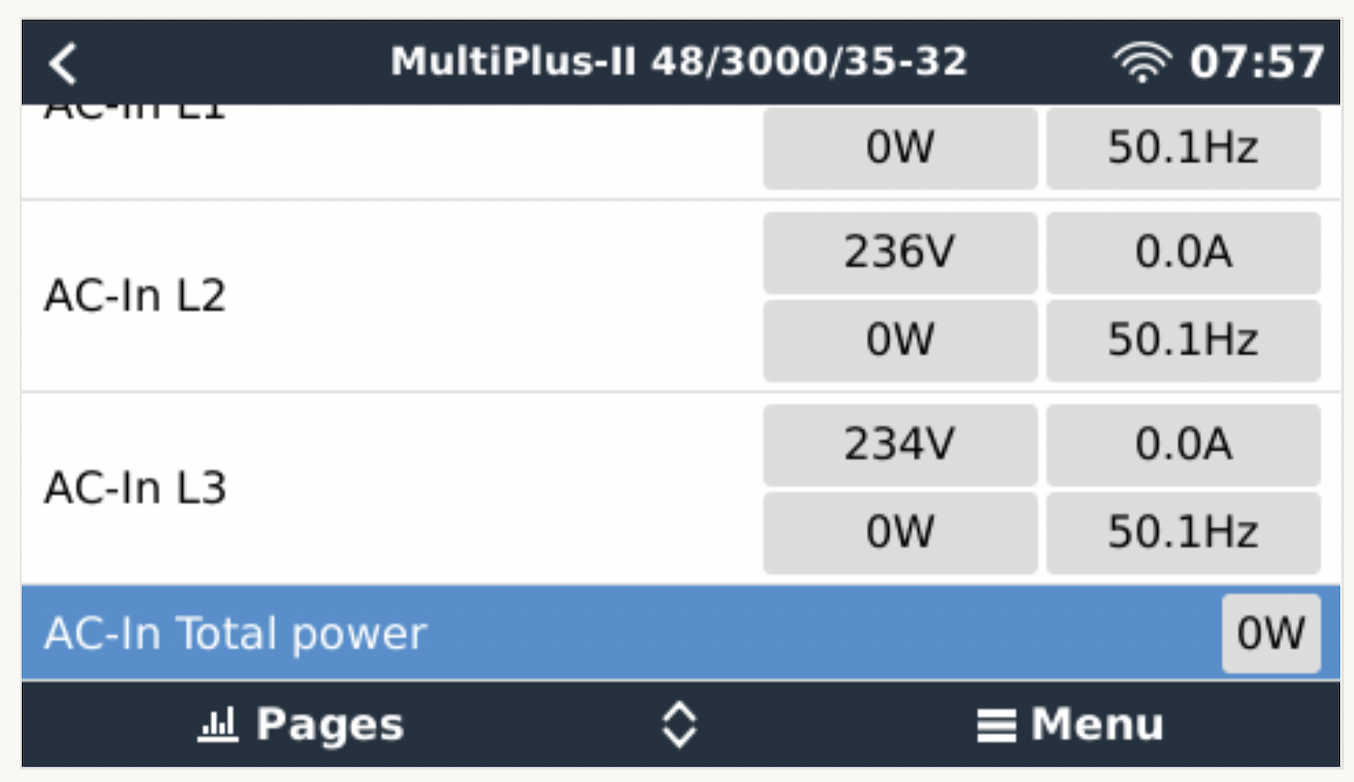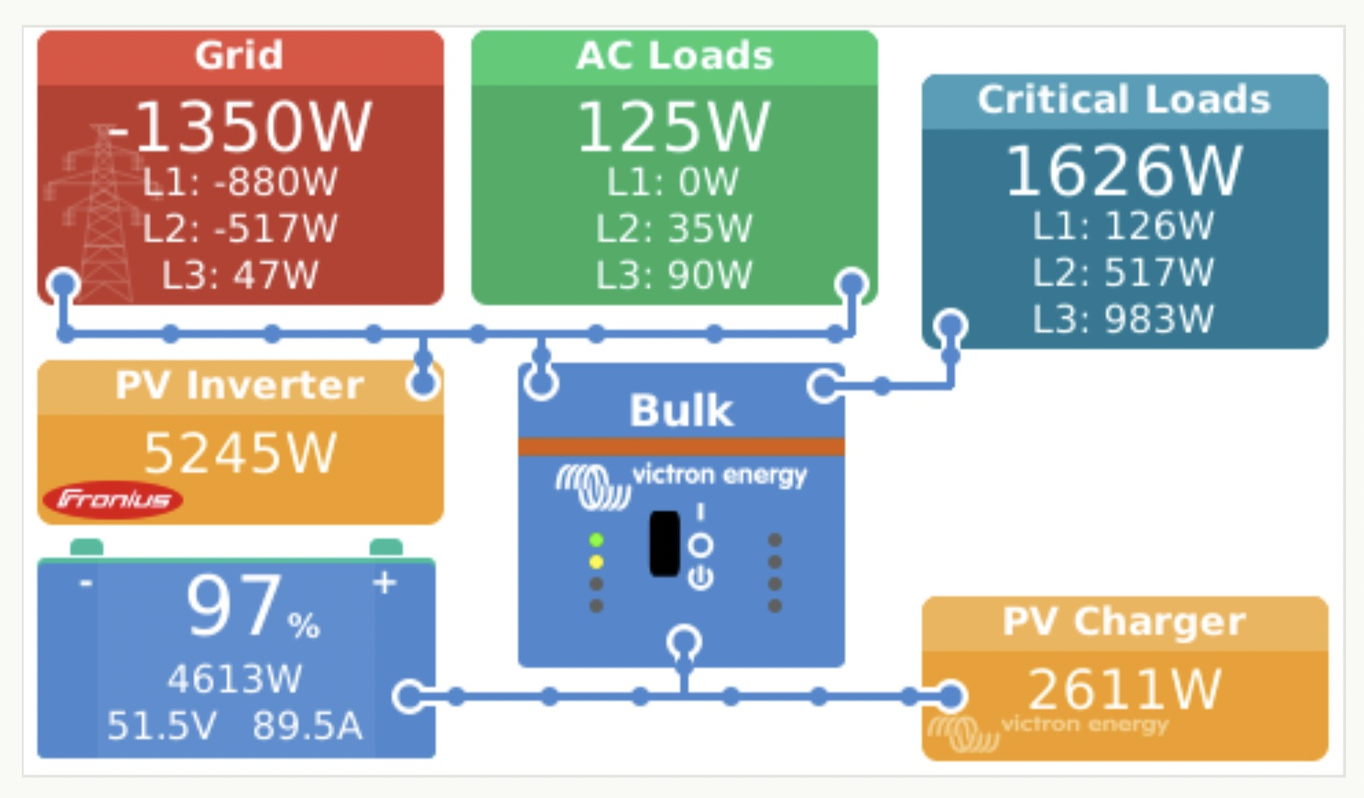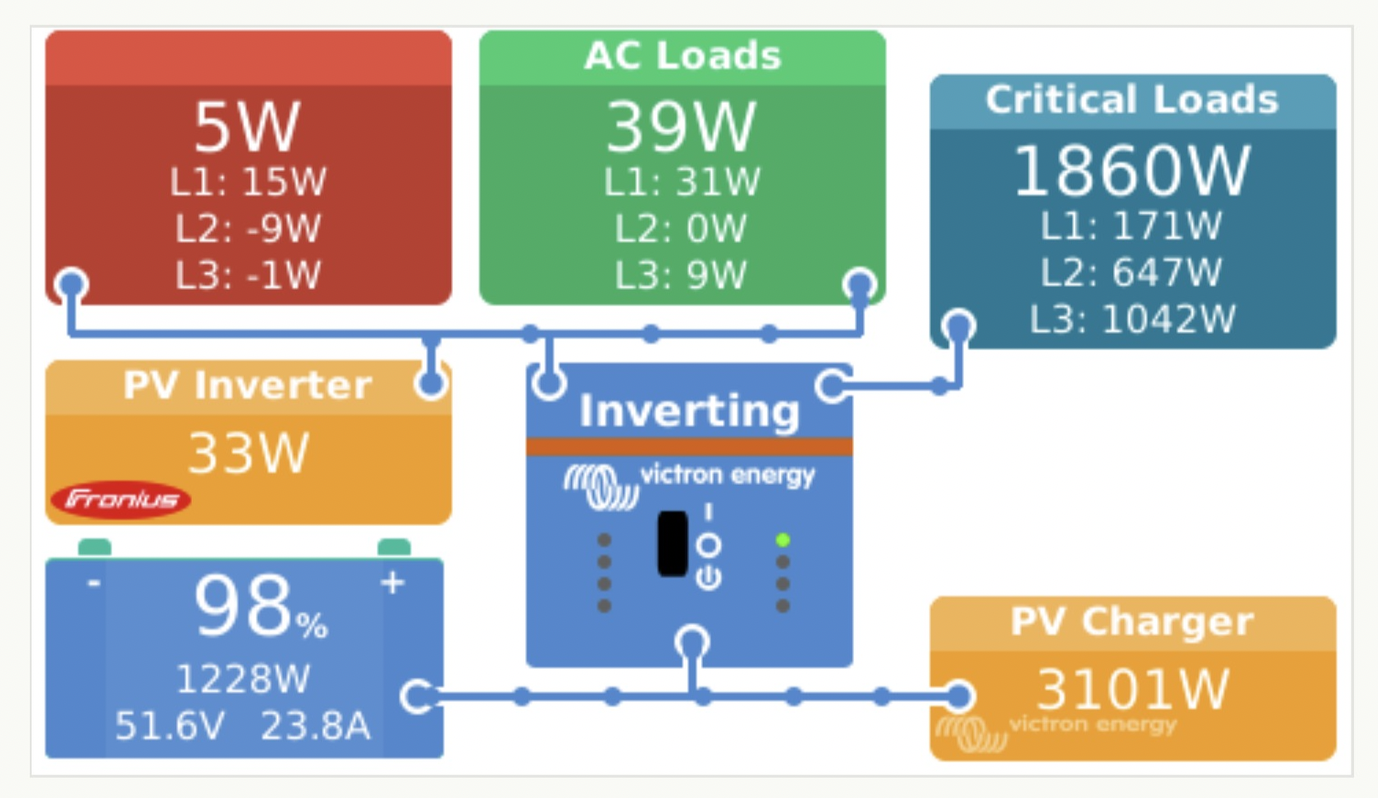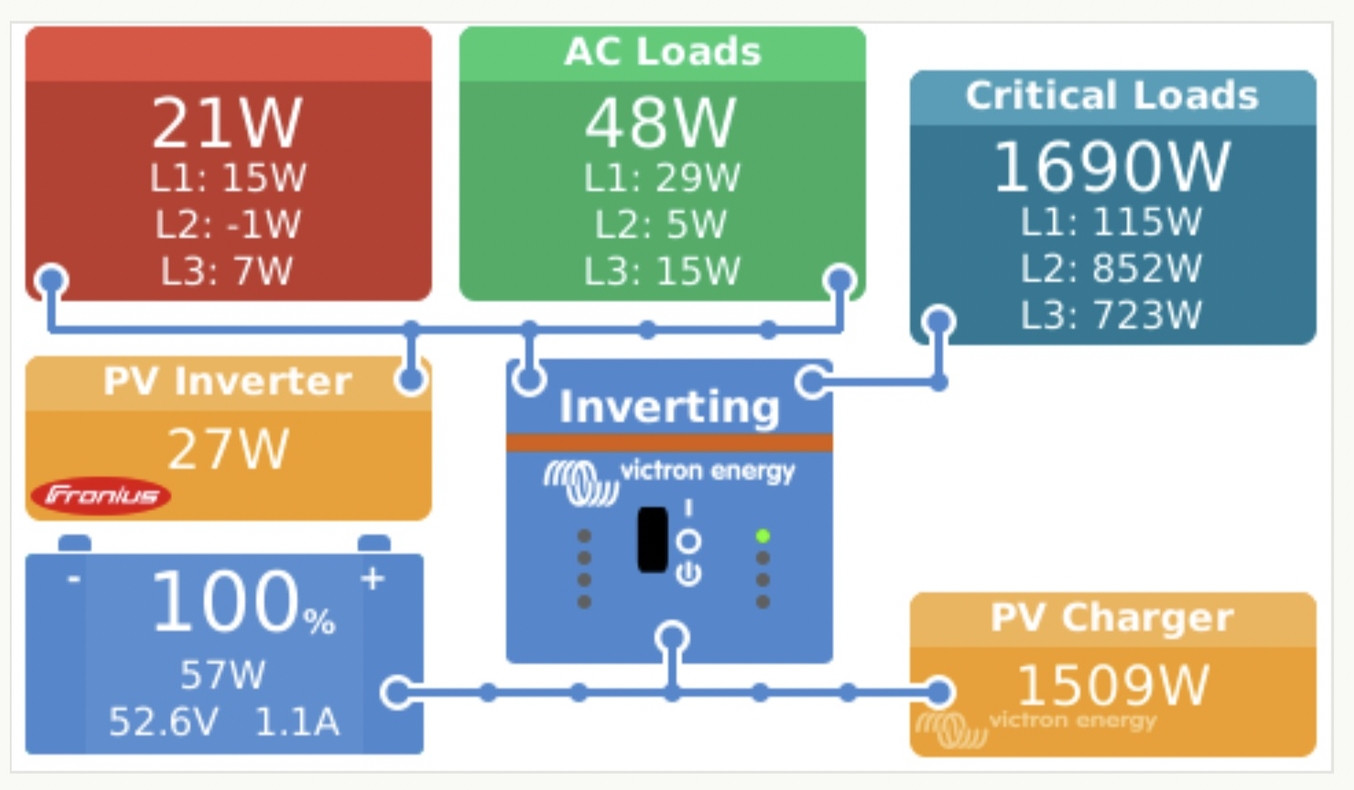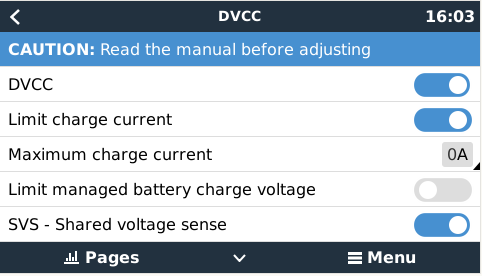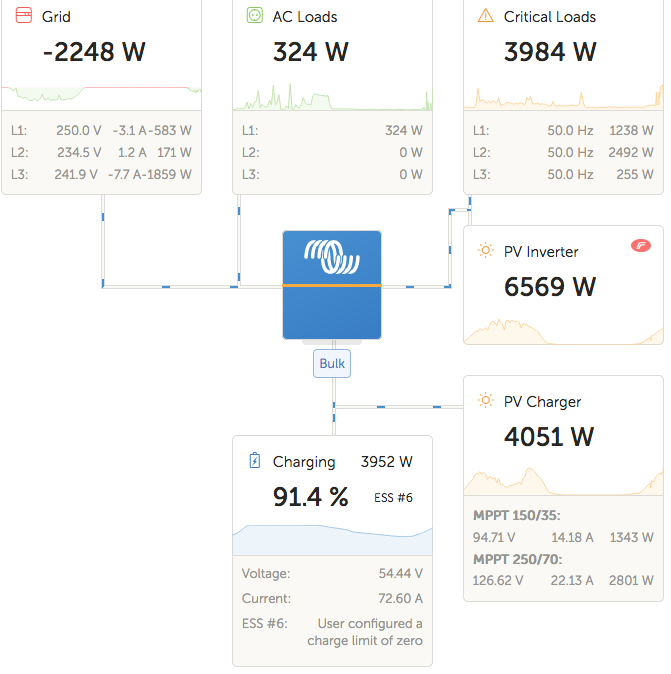I am running an ESS system consisting of the following components:
- CerboGX at v2.84 (ESS mode 2)
- 3x MP2 48/3000/32
- 1x RS 450/100 (v1.09)
- 6x PylonTech UC3000 battery modules
- 1x Fronius Symo 10.0.3-M (connected between MP2s and GridMeter (EM24) (1:1 rule)
The general idea of the setup is to charge the batteries during the daytime using the DC coupled PV ONLY, provide the daytime energy usage with the AC coupled PV but also feed in excess energy into the grid (both AC and DC)
The ESS grid setpoint is set to -40W
AC and DC coupled feed in excess settings are both ON
Limit system feed-in is also ON
Maximum feed in is set to 15000 W (network provider requirement)
Feed-in limiting active says: YES (Fronius ModBus TCP set to control via ModBus at Prio 1)
In order to charge the batteries in the morning using the DC coupled PV energy only, I have tried to set the MP2 into "Inverter only" mode, so it wont use any of the AC coupled PV energy which I would rather feed into the grid (morning hours usually have high energy costs/profits if you feed-in)
What I have noticed though is that the AC coupled PV system (Fronius) is "running (throttled)" to basically 0-50W while the battery is not 100% charged. Once its charged 100% the throttling ends and the Fronius inverter feeds into the house/grid at full speed.
If I set the MP2s to "ON" instead of "inverter only", the Fronius inverter in the Remote Console is still showing "Running (throttled)" while in fact is it NOT throttled at all, but going full steam (not hitting the 15000W total limit yet)
While I do see the grid setpoint being set to -50W could be a reason for throttling the Fronius, but why is the "Feed in excess" not overriding this and why does the mode of the MP2s influence this behaviour?
Running the MP2 in "ON" mode, the Fronius produces much more energy than the MP2s can use to charge the battery (in addition to the RS450).
Example (rounded numbers)
Fronius produces 6000W
RS 450 provides 2500W (DC)
MP2s use an extra 2500W (AC) to charge the batteries at 100A (limit)
House uses 500W
GridMeter shows -3000 W (3000W feed in)
Switching to "inverter only" changes this to:
Fronius produces 0-50W (fully throttled down) UNEXPECTED
RS 450 provides 2500W (DC)
MP2s do NOT charge the batteries (expected)
GridMeter shows -50 to 0 W (no feed in) UNEXPECTED
House uses 500W (provided by the MP2s using the DC coupled energy and thus slowing down the charging)
Why does the Fronius not continue at 6000W feeding everything into the house / grid ?

